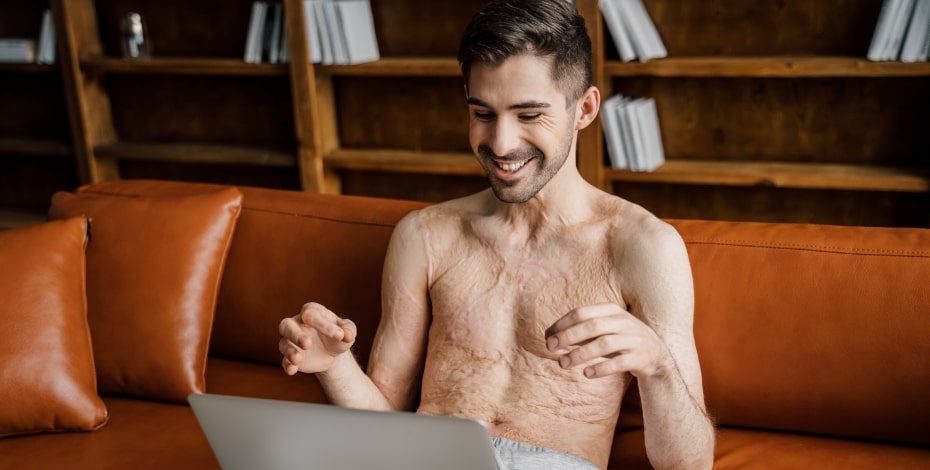
Non-invasive interventions for burn scars

A group of physiotherapists in Brazil collaborated on a review of the evidence about physiotherapy interventions for burn scars. Lead author Cíntia Helena Santuzzi answers some questions about the systematic review.
What are common symptoms that can arise from burn scars?
The most common symptoms are acute or persisted pain (paraesthesia) and itching. Large scars may also lead to scar contractures and aesthetic issues that generate psychological and social effects.
What interventions did your review consider for treating those symptoms?
We planned to examine all non-invasive therapies applied to burn scars, which means non-surgical and non- pharmacological therapies.
Commonly used non-invasive therapies are tissue mobilisation, electrotherapy or phototherapy and topical therapies for prolonged use such as silicone therapy.
Which interventions were effective for reducing the intensity of pain felt at burn scars?
Ten randomised trials examined effects on pain intensity.
Pooling data from two trials suggested that massage and laser therapy may reduce pain intensity and pooling from five trials indicated that extracorporeal shock wave therapy is effective for reducing pain intensity.
What physiotherapy interventions were shown to be effective for itching?
Eight randomised trials examined effects on itching.
One or two trials suggested that massage, transcutaneous electrical nerve stimulation and laser therapy may reduce itching; however, data could not be pooled.
Pooling data from two trials indicated that extracorporeal shock wave therapy is effective for controlling itching.
What about low elasticity and vascularity?
In this review, three non-invasive interventions (ie, massage, shock wave and silicone therapy) were examined for their
effects on scar elasticity and vascularisation but inconclusive results showed small or negligible benefits.
Do you think that the interventions that were shown to be beneficial should be attempted before more invasive
interventions?
We believe that although non-invasive therapies have little to moderate effect on controlling pain and itching, they should be considered before trying invasive treatments for scars because they are low- cost, safe and easy to implement.
What about avenues for further research in this area?

Cíntia Helena Santuzzi
Larger, well-designed clinical trials are warranted to reduce the uncertainty regarding the magnitude of the effects on pain and itching.
Moreover, trials that combine those cited therapies with exercises should examine their effects on clinically relevant outcomes for activities of daily living and community participation.
>> Cíntia Helena Santuzzi is a physiotherapist, researcher and associate professor at the Center of Health Sciences, Universidade Federal do Espírito Santo, Brazil. Cíntia has a PhD in physiological sciences and her key research interests are physiotherapy after skin diseases and women’s health.
© Copyright 2024 by Australian Physiotherapy Association. All rights reserved.





